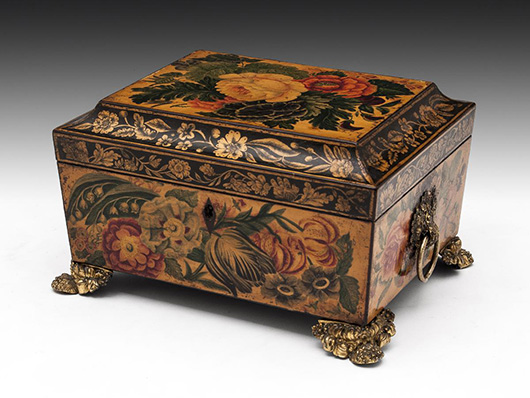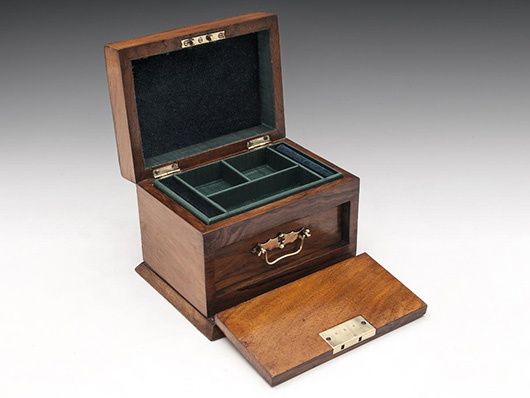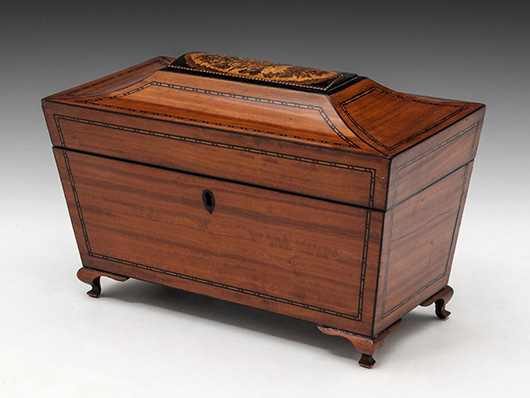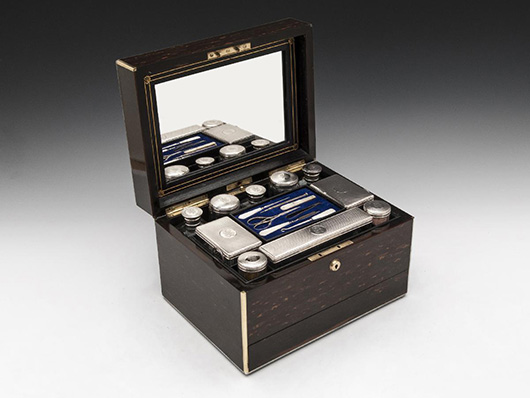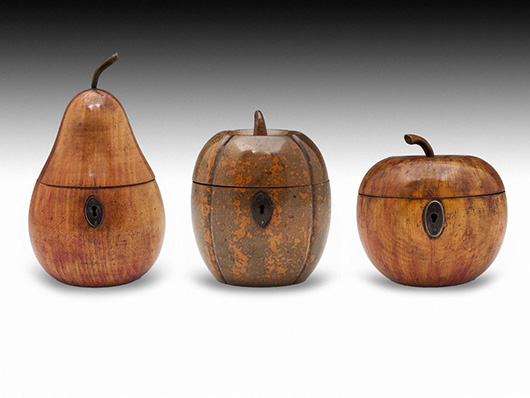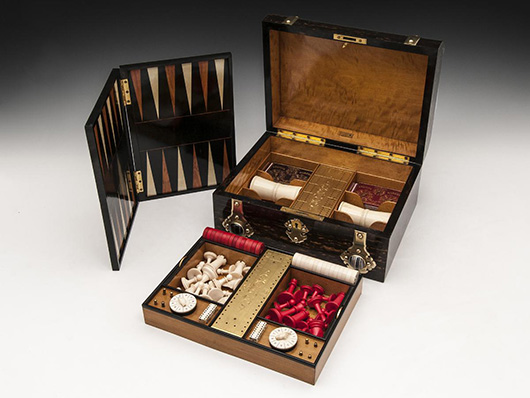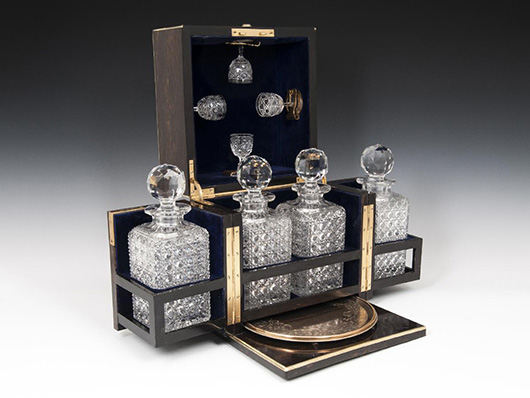
Truth be told, I have high hopes of being on the receiving end of the odd Christmas box myself this year, but hopefully of a different kind entirely. Any of those illustrated here would do nicely.
The idea of the Christmas box and, no doubt, the name itself, dates from early Christian times. Wooden charity boxes that had hung in churches throughout the year were opened on Charismas Day and the contents distributed among the poor of the parish on Boxing Day. The “Dole of the Christmas box,” as the cash was called, must have been welcomed by those unable to celebrate the festive season without it.
By Tudor times, the Christmas box had come to mean the collecting box carried by apprentices who would knock on the doors and seek gratuities from their masters’ customers.
My own collection of knickknacks and nonsense includes a collecting box made from papier-maché in the form of a miniature loaf of bread. A slit for the money is cut into the dome-shaped crusty part and embossed around the outside are the words “Tent Hall Free Breakfasts and Evangelistic Schemes.”
Stuck to the underside, over a removable plug to get the money out, is a sticker which explains that the collecting box was intended to raise money for the grandly titled “Glasgow United Evangelistic Association Evangelistic and Ameliorative Schemes.” It cost me ten bob (50p) in a Glasgow junk shop a couple of years ago and it has been an amusing conversation piece ever since.
Earliest surviving wooden money boxes are iron-bound, hollowed out tree trunks, usually with three different locks and originally intended for church use. In 1166, Henry II ordered that they should be placed in all churches to receive offerings for the relief of the Holy Land. He also said that the keys for the locks should be held by the priest and two reliable parishioners so that the money might ultimately find its way to where it was intended.
Personal money boxes, particularly those intended for children, are another fascinating area for the collector. Again, a great many were produced by religious and evangelical organizations, notably the Bible Society which, in the late 19th century, produced a small carved wooden Bible with the coin slot cut into the “leaves” of the book.
Collecting antique boxes is hobby that could fill a lifetime. Arguably the richest source derives from the ritual of taking tea, once such a precious commodity that it had to be kept under lock and key. Rare caddies carved from apple and pear wood in the shapes of the fruit are among the most sought after but are also expensive. They date from the closing decades of the 18th century and can command prices in excess of £4,000.
The East India Company’s monopoly on tea trading, which was not lifted until 1833, and the government’s heavy import duties, meant tea was available only to the rich. In 1665, Thomas Garway, advertised tea for sale for the equivalent of around £100 per pound of weight today.
A safe place in which to store tea became essential, hence the caddy, a name derived from the Malay kati, a unit of weight for tea, of approximately 1 1/3 lbs. Caddies usually have two lidded compartments, each holding one kati, lined with thin foil or paper, for black and green tea respectively and a glass bowl for blending the two.
Grand caddies were a matter of great pride and a family status symbol. At first the finest were made in silver, enamel, porcelain or mahogany. By the 1780s, ivory, tortoiseshell, mother-of-pearl, glass, papier-maché and many exotic woods were also being used. The wooden caddy became a familiar household item toward the end of the 18th century, all with locks to protect the valuable commodity from pilfering servants.
Every jewelry collector knows the joy of owning a fine box in which to keep a collection safe, while writing slopes and compendium boxes containing games or silver-topped bottles for toilet essentials, combs and brushes are other rich areas of collecting.
Early travelers were a stoic bunch, enduring many hardships. Ships and trains were cold and uncomfortable and the coaches they used were pulled by horses and didn’t have a hostess service. What creature comforts passengers had on long journeys they took with them, packed in their luggage, which is where the box came into its own.
The compendium first appeared in the 17th century. Nineteenth century examples were merely more elaborate versions, often so much so that they were fashionable to have out on show at home.
In each case there is always the excitement of finding that previously overlooked secret compartment. They were intended for love letters, banknotes and gold coins and can be located just occasionally after some careful measuring and tapping.
If the internal dimensions of a box, plus the thickness of the wood, do not tally with the external measurements, try a light tap to the suspect sliding tray areas. If there’s a hollow ring to it, try lifting the slim wooden dividers between compartments. Gentle pressure on each in turn might just locate the one that operates a spring, that releases a previously concealed draw, containing … who knows what.
The illustrations are from antique box specialists Hampton Antiques, Northamptonshire, and will be on sale at the Antiques for Everyone winter fair at Birmingham’s National Exhibition Centre, which runs from Dec. 4-7. More than 250 specialist dealers will offer a feast of fine art, antiques and collectors’ items for collectors with prices to suit all pockets. Admission including parking is £15.

ADDITIONAL IMAGES OF NOTE
